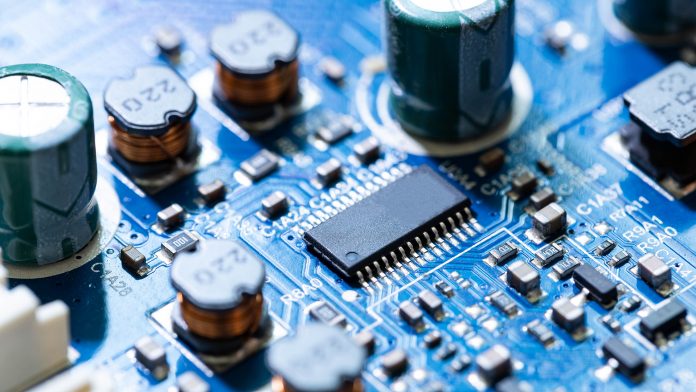Researchers at the National University of Singapore have developed a novel brain-inspired device that could facilitate the transformation of semiconductor design.
The electronic devices of today are often reliant on semiconductor logic circuits based on switches that are hard-wired to execute predefined logic functions.
Now, scientists from the National University of Singapore (NUS), alongside an international group of researchers from the Indian Association for the Cultivation of Science, Hewlett Packard Enterprise, the University of Limerick, the University of Oklahoma, and Texas A&M University, have established a unique molecular memristor – or an electronic memory device – that has outstanding memory reconfigurability.
Contrasting conventional hard-wired circuits, it is possible to reconfigure this novel molecular device by using voltage to embed various computational tasks. The energy-efficient technology has enhanced computational power and speed that could theoretically be utilised in edge computing, on top of handheld devices and applications with a limited power resource.
“This work is a significant breakthrough in our quest to design low-energy computing. The idea of using multiple switching in a single element draws inspiration from how the brain works and fundamentally reimagines the design strategy of a logic circuit,” explained the leader of the research team, Associate Professor Ariando from the NUS Department of Physics.
The group’s exciting findings have been published in Nature.
Technology inspired by the human brain
“This new discovery can contribute to developments in edge computing as a sophisticated in-memory computing approach to overcome the von Neumann bottleneck, a delay in computational processing seen in many digital technologies due to the physical separation of memory storage from a device’s processor,” added Ariando. The new molecular device could also facilitate the design of next-generation processing chips with enhanced computational power and speed.
“Similar to the flexibility and adaptability of connections in the human brain, our memory device can be reconfigured on the fly for different computational tasks by simply changing applied voltages. Furthermore, like how nerve cells can store memories, the same device can also retain information for future retrieval and processing,” commented first author Dr Sreetosh Goswami, Research Fellow from the Department of Physics at NUS.
“These molecules are like electron sponges that can offer as many as six electron transfers resulting in five different molecular states. The interconnectivity between these states is the key behind the device’s reconfigurability,” explained Dr Sreebrata Goswami, a member of the research team who was a Senior Research Scientist at NUS and previously Professor at the Indian Association for the Cultivation of Science, who conceptualised and designed a molecular system belonging to the chemical family of phenyl azo pyridines that have a central metal atom bound to organic molecules called ligands.
Goswami developed a small electrical circuit comprising a 40-nanometer layer of molecular film sandwiched between a top layer of gold, and a bottom layer of gold-infused nanodisc and indium tin oxide. He noted an unparalleled current-voltage profile upon employing a negative voltage to the device. Contrasting traditional metal-oxide memristors that are switched on and off at only one fixed voltage, these organic molecular devices can be switched between on-off states at several discrete sequential voltages.
By utilising an imaging method known as Raman spectroscopy, spectral signatures in the vibrational motion of the organic molecule were examined to explain the multiple transitions. Goswami explained that: “Sweeping the negative voltage triggered the ligands on the molecule to undergo a series of reduction, or electron-gaining which caused the molecule to transition between off and on states.”
The team recorded the behaviour of the molecules by applying a decision tree algorithm with “if-then-else” statements, which is utilised in the coding of several computer programmes, specifically digital games, as opposed to the traditional method of applying basic physics-based equations.
The future of energy-efficient devices
In order to expand on their findings, the group utilised the molecular devices to run programmes for various real-world computational tasks. As a proof of concept, the researchers showed that their technology could perform complex computations in a single step and could be reprogrammed to execute further tasks straight after. An individual molecular memory device could perform the same computational functions as thousands of transistors, thereby making the technology a more powerful and energy-efficient memory option.
“The technology might first be used in handheld devices, like cell phones and sensors, and other applications where power is limited,” concluded Ariando.
The researchers are now building new electronic devices incorporating their innovation and working with collaborators to conduct simulation and benchmarking relating to existing technologies.









